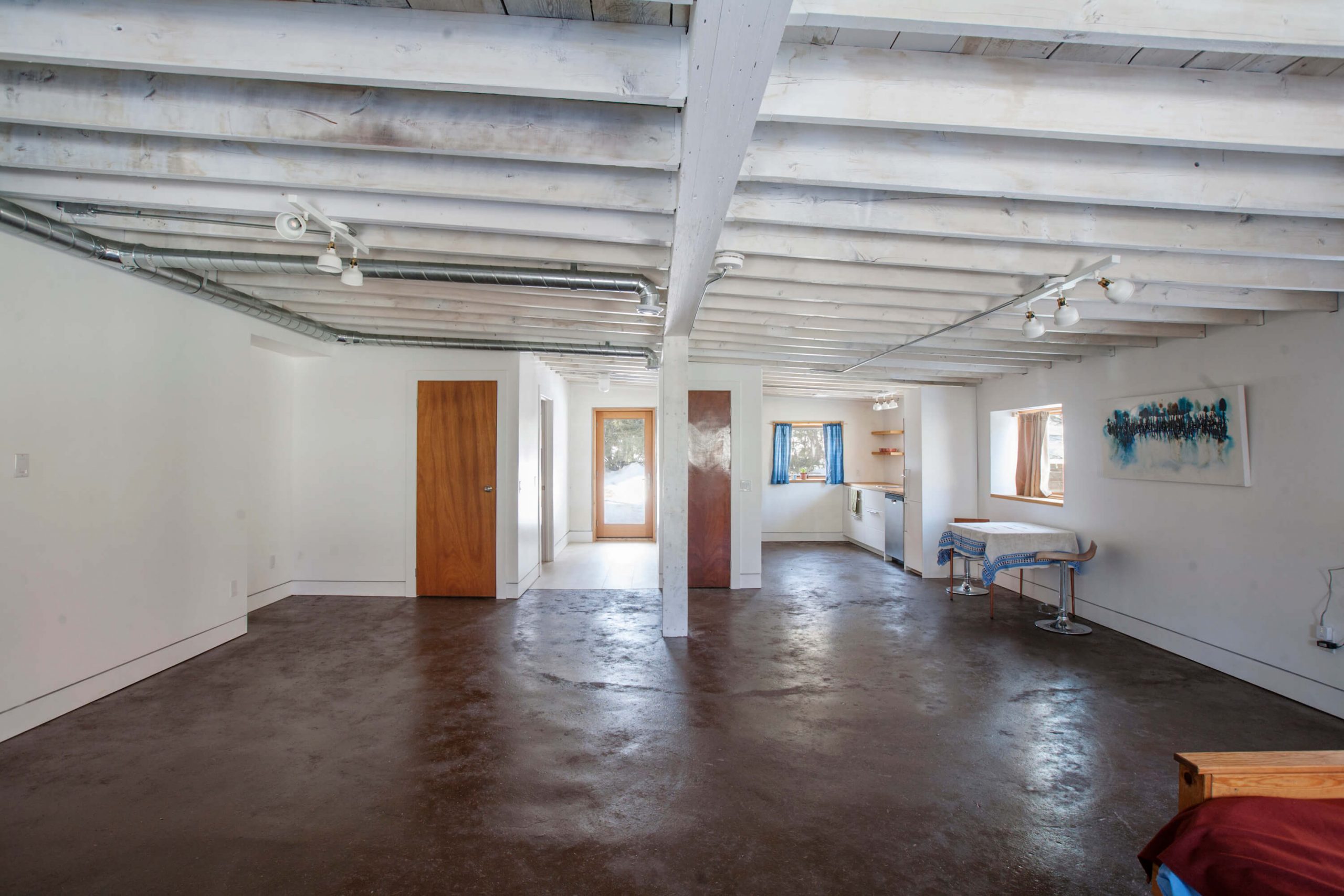Take one step – especially with bare feet – on an earthen floor and chances are you will be sold on the idea. You will want an earthen floor of your own. And not only will you be making happy feet when you choose an earthen floor, you’ll be making one of the most radical-yet-simple sustainable building choices… one that could dramatically reduce the environmental impacts of the built environment in a meaningful way.
A true game-changer
With the construction industry touting just about every option as being “eco-friendly” these days, it can be hard to know what choices really do make a difference. Earthen floors are a truly eco-friendly option. Using just four basic, natural, chemical-free and abundant materials that are minimally processed on site, an earthen floor creates a durable, healthy finished floor with the lowest possible environmental impacts. Mix the right proportions of clay, sand, natural fibers and drying oils and you’ll have a floor that is as beautiful as it is planet-friendly. The embodied energy of a 3/4″ thick earthen floor is 0.16 MJ/square foot, a tiny fraction compared to 3 MJ/square foot for hardwood, linoleum and concrete flooring of the same thickness, and 10-25 MJ/square foot for tile.
Really, a dirt floor?
It is often difficult for anybody in the “developed” world to consider an earthen floor as part of a clean, modern home. But earthen floors can be the visual showpiece of a home. A well-made earthen floor is a thing of beauty, bringing a texture and visual impact that cannot be replicated with any other material. Natural clay colours or natural pigments offer a wide palette, and a variety of fiber options can be used to great effect. And then there are the oil finishes which can add a rich lustre and additional colour options.
Are hearten floors durable?
Earthen floors are not a common option, and therefore most people do not have experience with seeing an earthen floor wear over time. In fact, these floors have very similar wear characteristics as most other natural floor materials like wood, bamboo and linoleum. All of these floor types can have a long lifespan under typical use conditions, although all are susceptible to scratching and gouging if mistreated, and all will require occasional refinishing to protect and enhance the surface of the material. Earthen floors are no different, and are quite easy to repair and refinish should some damage occur. I witnessed the earthen floor at Arts Centre Hastings spend a night under water after a large cooler full of melted ice broke, and yet after mopping up the spill the floor was not affected at all!
Place them wisely in the building
Though durable, it is wise to place them appropriately. Entryways, especially those that will see a lot of salt from snowy boots, can stress an earthen floor. Areas which will see a lot of dragging of chairs and furniture may not be appropriate. But if the use of the floor is for interior foot traffic, they hold up very well.
How does it work?
The clay/sand/fiber mix of an earthen floor may not seem like an ideal combination in a heavy-wearing scenario like a floor. These elements combine to make a substrate that can be easily packed and levelled. A typical earthen floor mix is 1 part of clay, 4 parts of sand, and 1 part of finely chopped fiber. As clays and clay soils can have different properties, it is always good to experiment with new materials before pouring an entire floor. Once this mix has been poured and troweled level, it is allowed to dry. Then the real magic occurs: several coats (anywhere from 2-6) of natural oil finish is applied to the floor. The oil penetrates into the clay/sand mixture and hardens around it, creating a tight and water-resistant finish that is very durable. The process is similar to natural linoleum, where linseed oil is mixed with sawdust. As with linoleum, the result is surprisingly solid.
Where can an earthen floor be used?
Earthen floors can be laid over many typical floor bases, including concrete slabs and plywood sub-floors. As long as the floor base is stable and doesn’t have excessive flex or deflection, then an earthen floor can be laid. Typical thickness for a finished earthen floor is 3/4″, though it is possible to make them thicker. The floors can be laid over hydronic heating tubes, or used under wood stoves or other sources of heat. Simple substrate preparations are used if the base is either very smooth and shiny or if it is water absorbent.
It’s easy to learn to make an earthen floor
The steps involved in mixing, laying and finishing an earthen floor are very straightforward. If you think an earthen floor might be in your future, you can check out our upcoming earthen floor workshops, where you’ll get a chance to mix, pour, level and finish a complete earthen floor.









